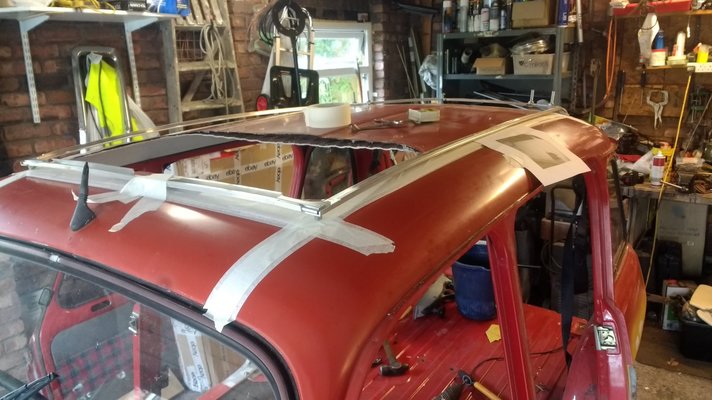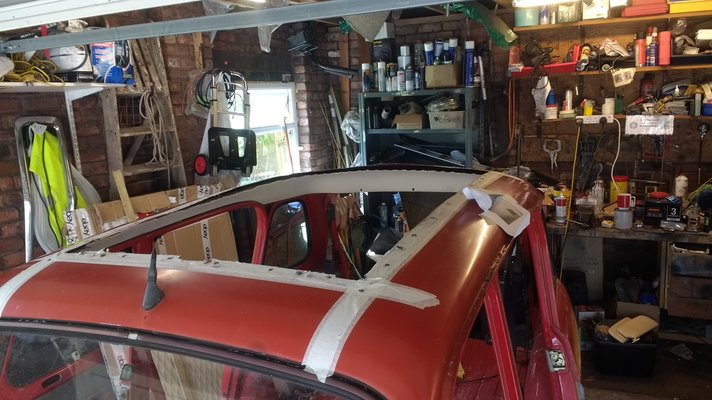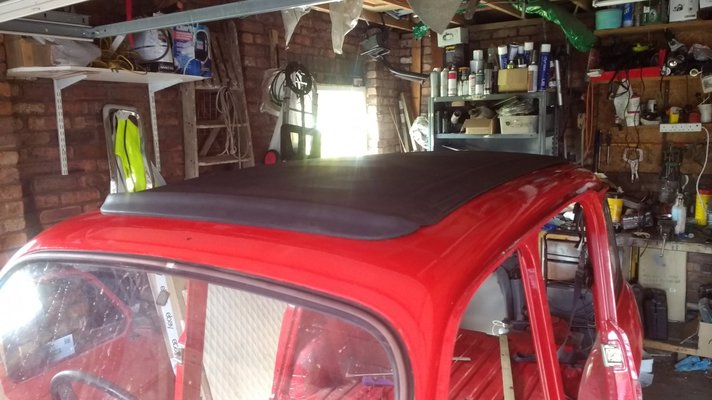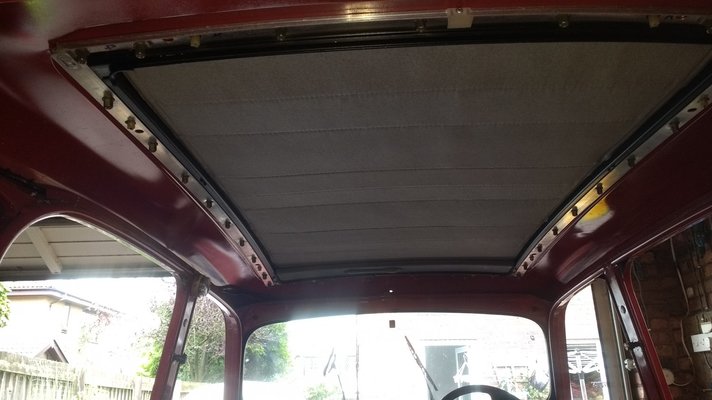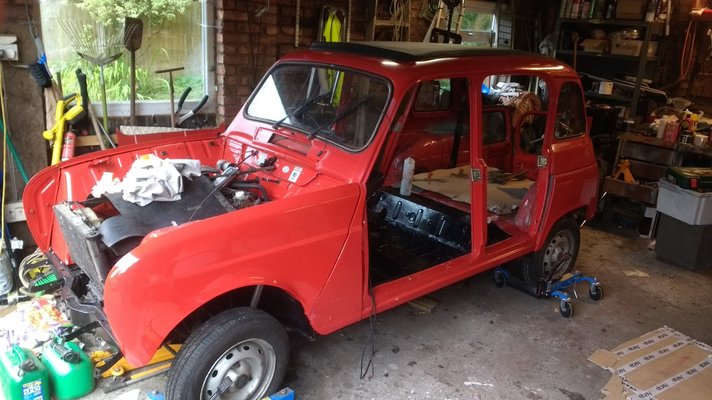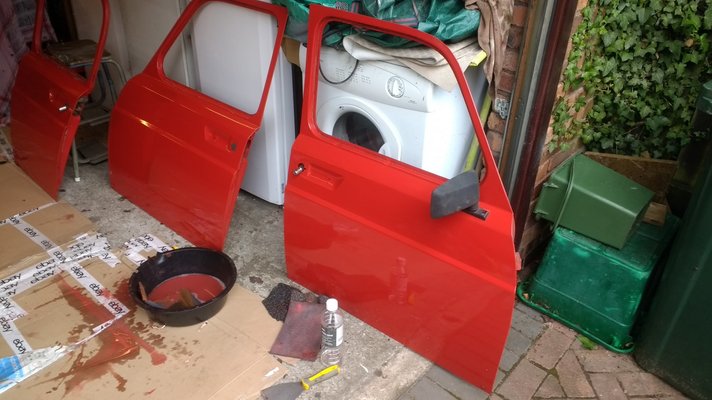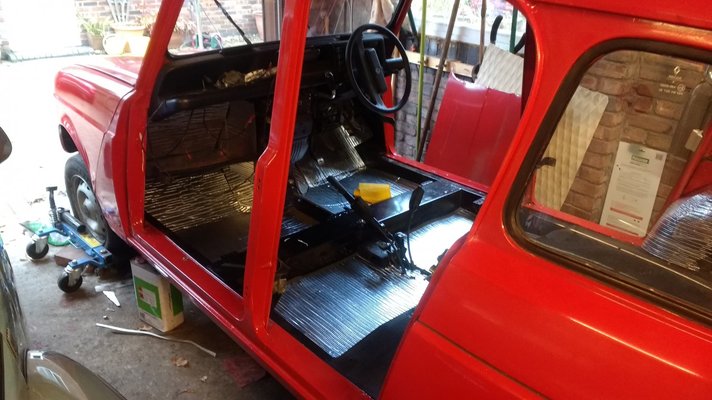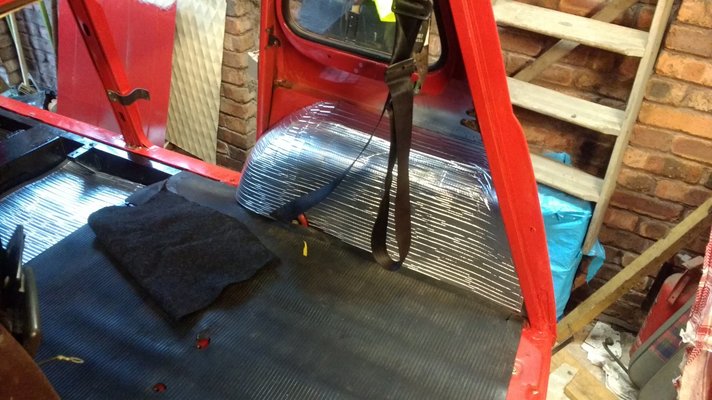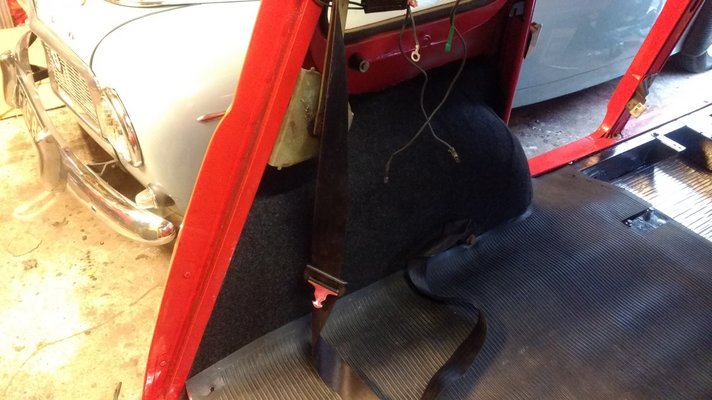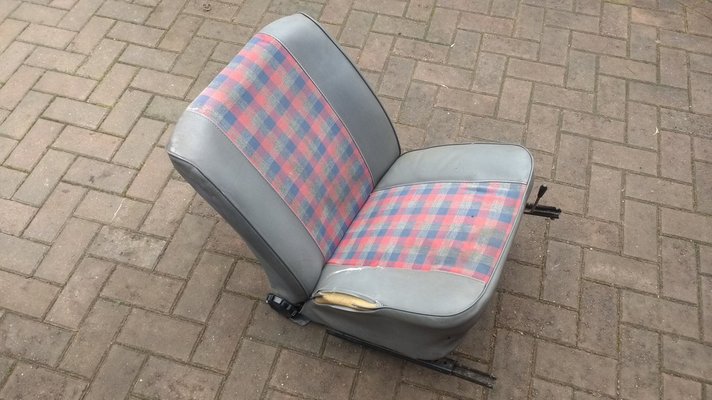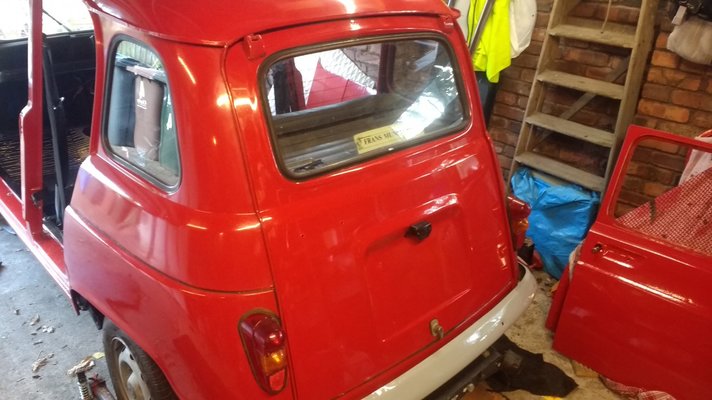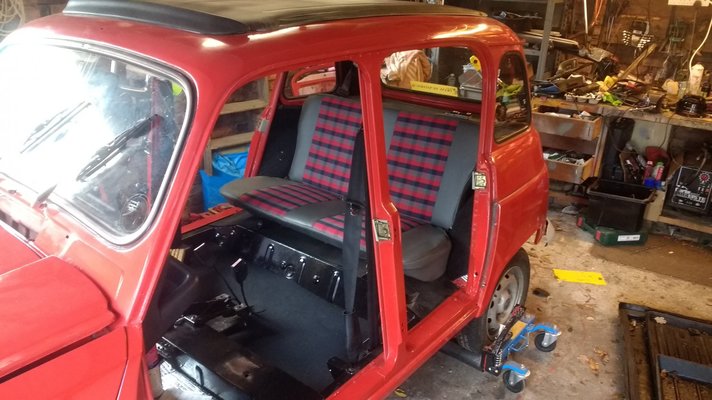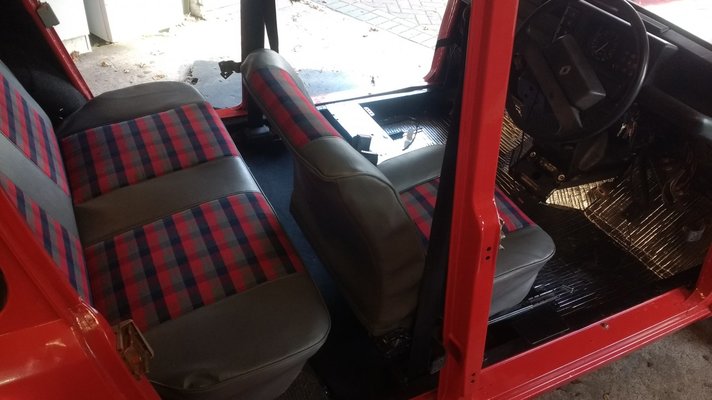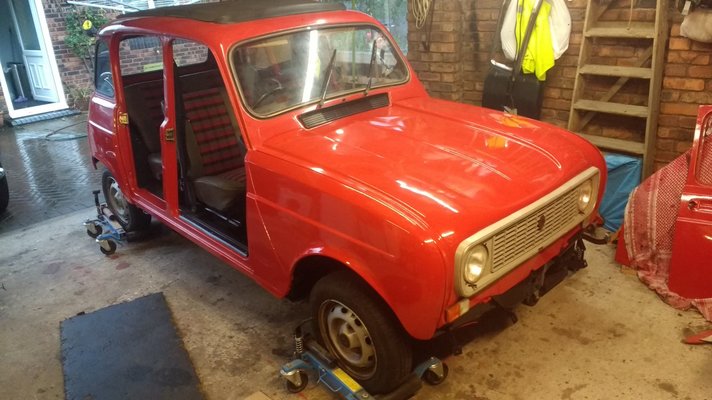barnfind
Enthusiast
- Messages
- 323
- Location
- Lancashire
So, we now have body and chassis back as one.
With the judicious use of a set of old steel garden chairs (don't try this with placcy ones!), some beefy wooden beams and my engine crane, .........
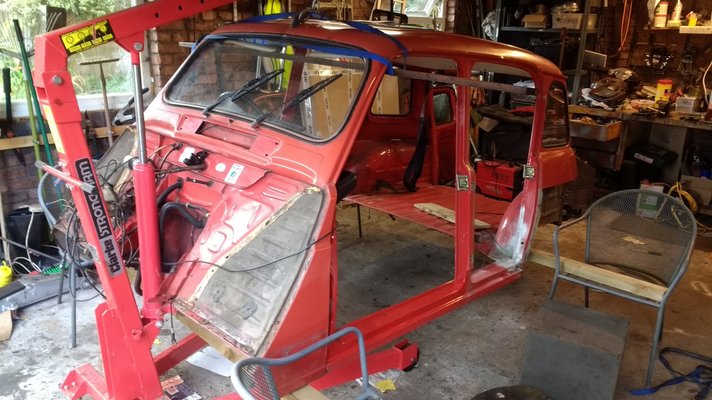
we eventually got the tub packed up high enough to push the chassis back underneath..........
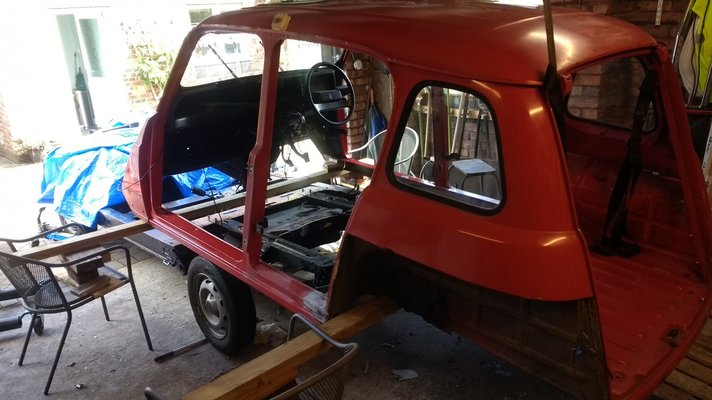
....and finally after some shoving and pushing........
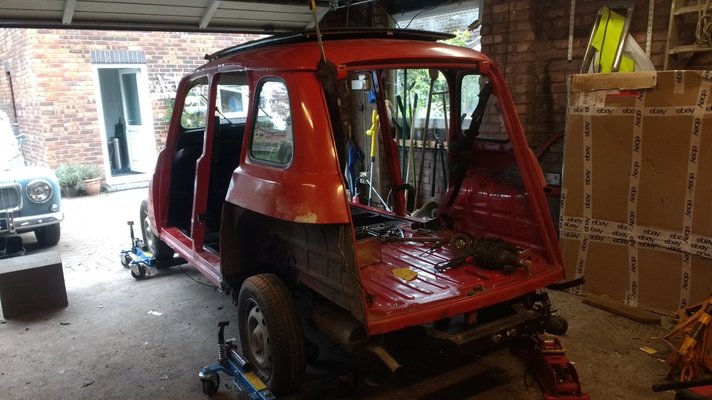
....it is all in one piece again. Not as easy as it looks because the drive is actually downhill from the garage's threshold, which makes any unbraked vehicle likely to develop a mind of its own. Still, take it steady, and all will be well. The hydraulic wheel dollies are very useful, incidentally for finally accurately placing the chassis, and very useful for moving the complete car around the workshop afterwards. One of my best buys tool-wise.
I have also carried out a welded repair on the offside rear wing mounting area, which has come out quite well, once I had adjusted to the idea of welding such thin metal again.
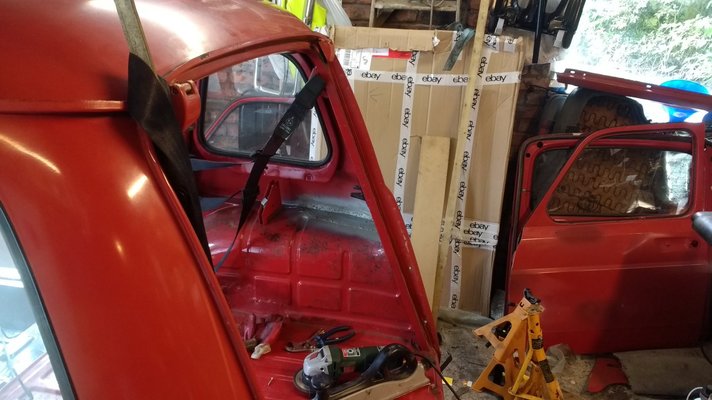
Finally, it was out with the 'moon roof'. I have tried the Twingo roof on the top of the car for size, and that is probably the next major job, to be completed prior to considering any further bodywork such as paint, etc.
I have had a look at the other threads on the forum, which show this operation. Some appear to cut just a straightforward rectangular hole with the necessary holes drilled around the edge, using the frame as a template. Others who have also inherited the chopped off section of Twingo roof as well, seem to have a different sort of hole with scalloped out corners, etc.
Any thoughts? The moon roof aperture is almost the right width and gives me a good starting point for cutting. Next step is to arm myself with a few decent jigsaw blades, or a nibbler.
With the judicious use of a set of old steel garden chairs (don't try this with placcy ones!), some beefy wooden beams and my engine crane, .........

we eventually got the tub packed up high enough to push the chassis back underneath..........

....and finally after some shoving and pushing........

....it is all in one piece again. Not as easy as it looks because the drive is actually downhill from the garage's threshold, which makes any unbraked vehicle likely to develop a mind of its own. Still, take it steady, and all will be well. The hydraulic wheel dollies are very useful, incidentally for finally accurately placing the chassis, and very useful for moving the complete car around the workshop afterwards. One of my best buys tool-wise.
I have also carried out a welded repair on the offside rear wing mounting area, which has come out quite well, once I had adjusted to the idea of welding such thin metal again.

Finally, it was out with the 'moon roof'. I have tried the Twingo roof on the top of the car for size, and that is probably the next major job, to be completed prior to considering any further bodywork such as paint, etc.
I have had a look at the other threads on the forum, which show this operation. Some appear to cut just a straightforward rectangular hole with the necessary holes drilled around the edge, using the frame as a template. Others who have also inherited the chopped off section of Twingo roof as well, seem to have a different sort of hole with scalloped out corners, etc.
Any thoughts? The moon roof aperture is almost the right width and gives me a good starting point for cutting. Next step is to arm myself with a few decent jigsaw blades, or a nibbler.





